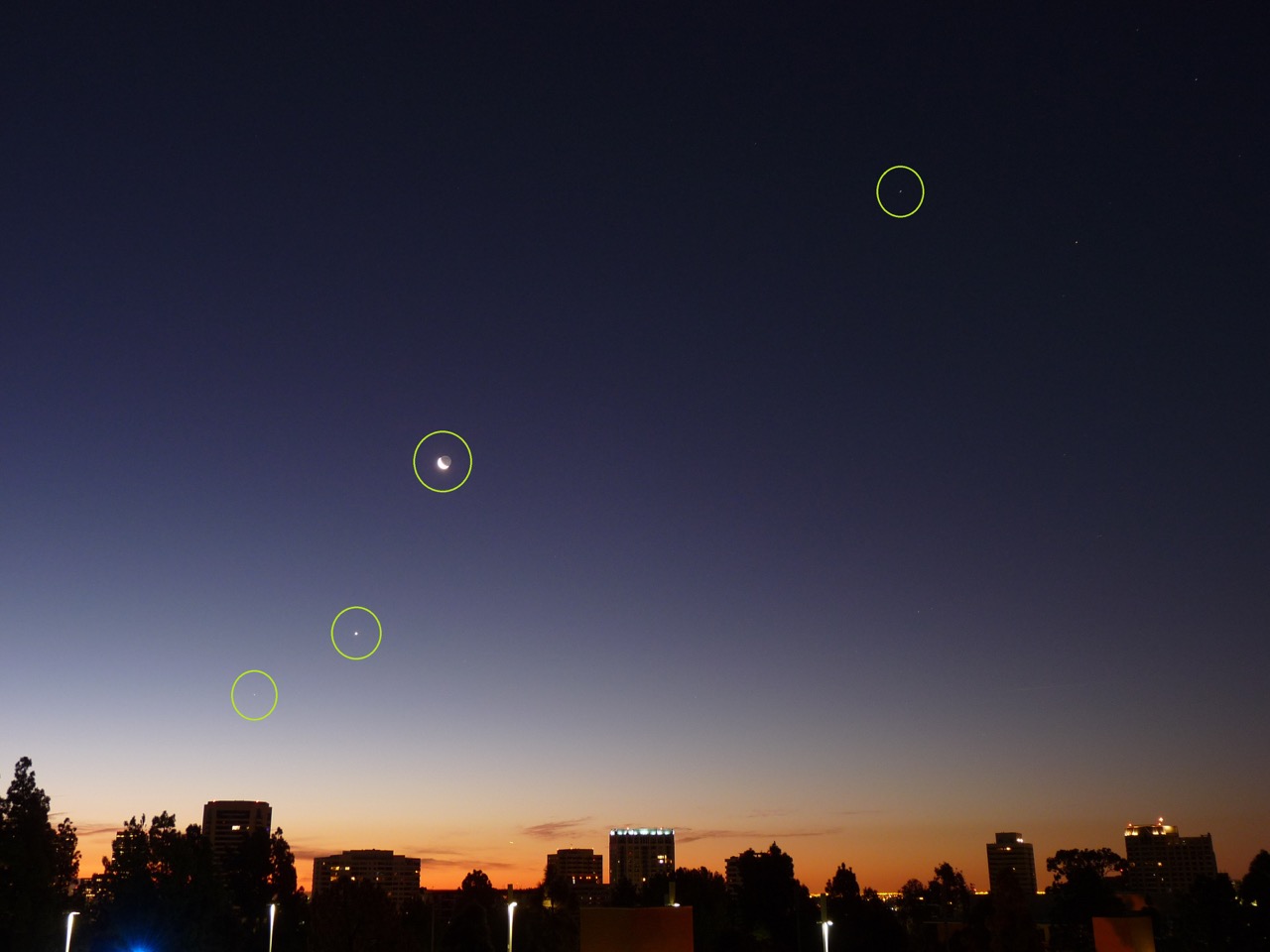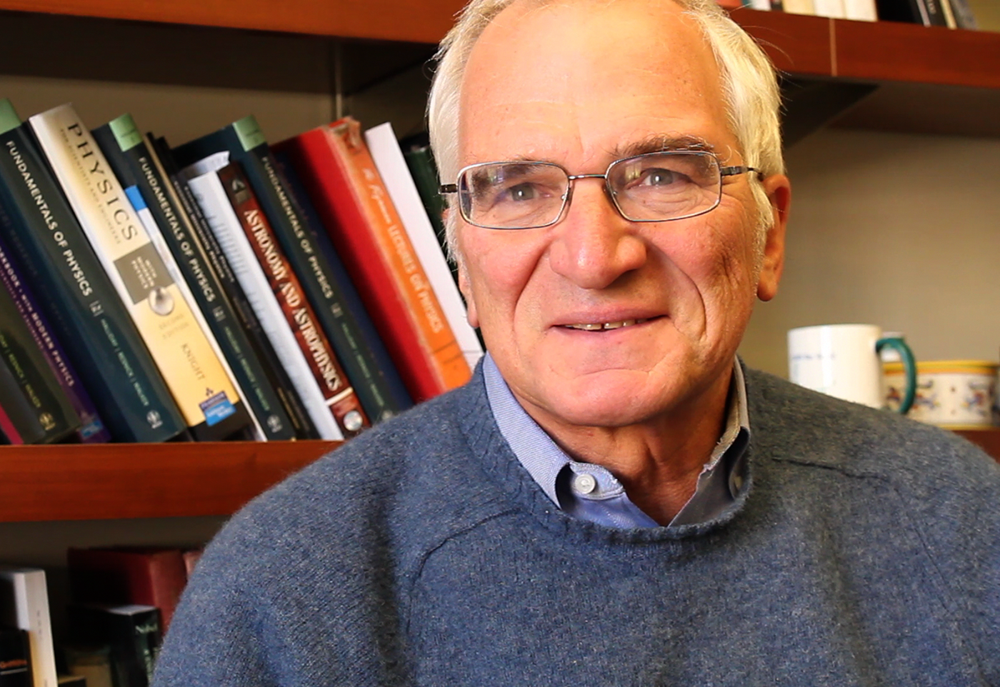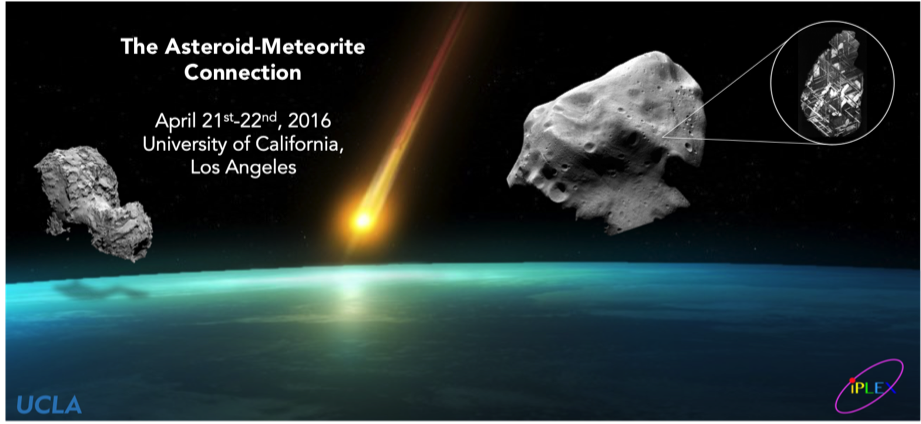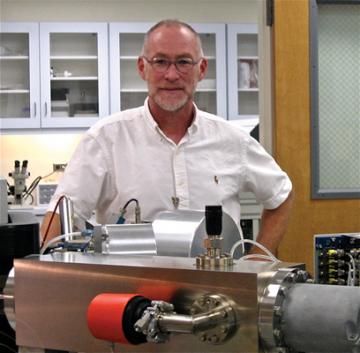 Congratulations to Department of Earth, Planetary, and Space Sciences Professor Ed Young who has been named a Fellow of the Geochemical Society and of the European Association of Geochemistry. The award is “bestowed upon outstanding scientists who have, over some years, made a major contribution to the field of geochemistry”. Ed will be honored at the Goldschmidt meeting in Yokohama this summer.
Congratulations to Department of Earth, Planetary, and Space Sciences Professor Ed Young who has been named a Fellow of the Geochemical Society and of the European Association of Geochemistry. The award is “bestowed upon outstanding scientists who have, over some years, made a major contribution to the field of geochemistry”. Ed will be honored at the Goldschmidt meeting in Yokohama this summer.
March 11th, 2016: From “Honey Planets” to a Geodynamic Origin of Life
I present some novel insights based on first principles, parameterized 1D thermal history, and 3D spherical mantle convection evolution models, which raise doubt concerning many crucial assumptions commonly used in planetary geodynamics and allow for a new view on the thermal and tectonic evolution of rocky planets in our solar system and beyond.
The new approach leads to massive rocky planets (Earth and bigger) remaining hotter for longer and plate tectonics being ideally initiated early on in the first 0.1-1Gyr driven by core cooling and boosted by a dry mantle and a late delivery of oceans. The latter suggests that geodynamically the early Earth might have been in many ways similar to today and connects the origins of plate tectonics to planet formation. For Venus, the high surface temperatures and a lack of surface oceans allow to initiate but not to maintain plate tectonics – suggesting an unstable tectonic configuration.
This evolutionary interior and tectonic framework also opens a door to systematically connect geodynamics to the evolution of metabolic pathways and the origins of life. In this context, I show preliminary results on the time-dependent (and for Mars and Earth local) geodynamic formation of hydrogen and methane rich oases.
Planets on Parade
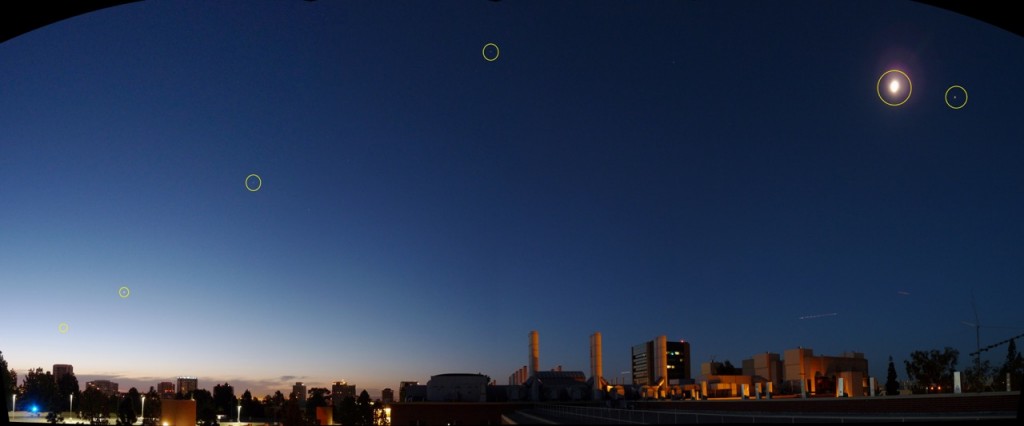
Late January and early February have provided spectacular views of the planets in the early morning sky. It is the first time that the bright planets that can be seen with the naked eye have been simultaneously visible since 2005. In their outward order from the sun, the five bright planets are Mercury, Venus, Mars, Jupiter and Saturn. They are visible because they are large and relatively close compared with other celestial objects like stars. Their surfaces and disks reflect sunlight and shine steadily, compared to the distant twinkling light that emanates from stars.
Many of the planets are visible before dawn, however, it is only at twilight that you can catch all five planets because of their orbital location around the Sun. This is because of the planets’ relative positions in their orbits. Currently, all of the planets are located on the same side of the Sun (to the right when viewing the solar system from above), which means that as the Earth rotates they are all visible just before the sun rises over the eastern horizon. That means that the planets are also visible from almost anywhere on the globe, with the exception of the poles.
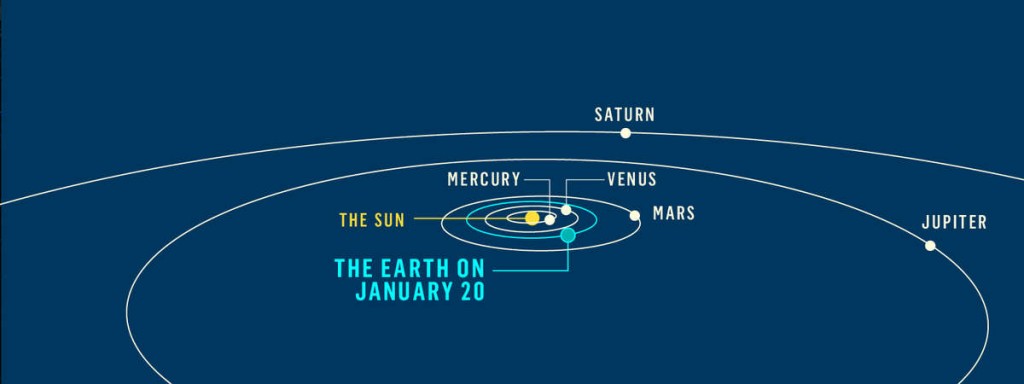
You can continue to see the planets in close to dawn until mid-February, and can take spectacular photos using a long exposure setting on your camera. The photos here are taken from the UCLA Campus, taken by UCLA researcher James Weygand. If you look very closely, you can see a sixth planet (hint: the photographer is standing on it!). To see more photos like this from around the world here: EarthSky.
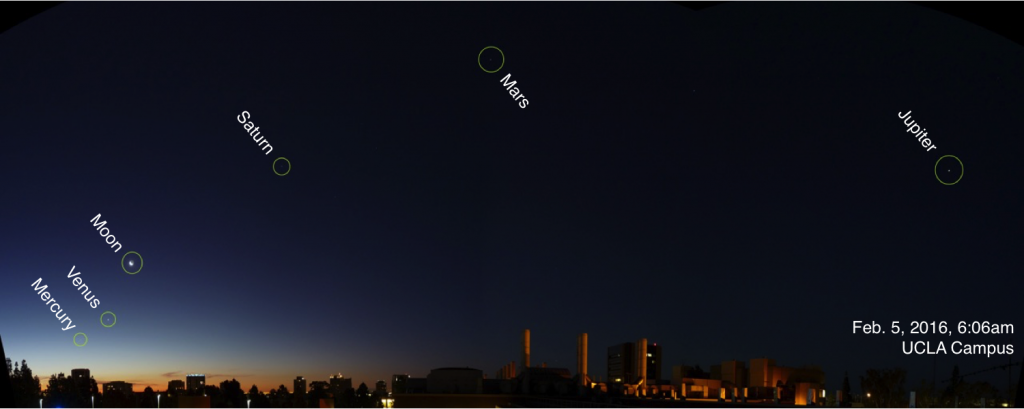
February 12th, 2016: When Photons Keep Secrets: New Observables for High Contrast Imaging Exoplanet Science
Detecting polarized light from self-luminous exoplanets has the potential to provide key information about rotation, surface gravity, cloud grain size, and cloud coverage. While field brown dwarfs with detected polarized emission are common, no exoplanet or substellar companion has yet been detected in polarized light. With the advent of high contrast imaging spectro-polarimeters such as GPI and SPHERE, such a detection may now be possible with careful treatment of instrumental polarization. I will discuss the role of polarimetry in brown dwarf and exoplanet science, test observations with GPI, as well as current and future polarimetric observing campaigns.
Bidding Farewell to UCLA Professor Mike Jura
 It is with sadness that we report the passing of UCLA professor and distinguished astronomer, Michael Jura. A facet to the Department of Physics and Astronomy and an active member of iPLEX, Mike always encouraged the interdisciplinary blending of planetary science and astronomy. He made major contributions to the fields of theoretical and observational astronomy and was influential in the development of infrared astronomy and the Infrared Laboratory at UCLA, which now has instruments in many terrestrial and space telescopes. His presence will be missed in both the fields of astronomy and planetary science and within the UCLA community.
It is with sadness that we report the passing of UCLA professor and distinguished astronomer, Michael Jura. A facet to the Department of Physics and Astronomy and an active member of iPLEX, Mike always encouraged the interdisciplinary blending of planetary science and astronomy. He made major contributions to the fields of theoretical and observational astronomy and was influential in the development of infrared astronomy and the Infrared Laboratory at UCLA, which now has instruments in many terrestrial and space telescopes. His presence will be missed in both the fields of astronomy and planetary science and within the UCLA community.
We leave you with a brief video that Mike recorded for iPLEX in 2012 explaining his attraction to science at a young age and the wonder that he held for studying the cosmos, in particular white dwarfs.
https://www.youtube.com/watch?v=YeyNXPBdWGw
February 5th, 2016: Spin-orbit coupling and the production of misaligned hot Jupiters via Lidov-Kozai oscillations
Many hot Jupiter systems exhibit significant misalignment between the orbital axis of the planet and the spin axis of its host star. While this misalignment could be primordial in nature, a large fraction of hot Jupiters are found in systems with distant stellar companions, and thus could have undergone Lidov-Kozai (LK) oscillations and acquired their misalignment dynamically. Here we present a study of the effect of spin-orbit coupling during LK oscillations, and the resulting spin-orbit misalignment angle distributions. We show that spin-orbit coupling induces complex, often chaotic, behavior in the spin axis of the host star, and that this behavior depends significantly on the mass of the planet and the properties of the host star (mass and spin history). We develop a semi-analytical framework that successfully explains most of the possible stellar spin behaviors. We then present a comprehensive population synthesis of hot Jupiters created via the LK mechanism, and discuss their possible observable signatures.
February 19th, 2016: Continuing the Search for Planets in “Holey Debris Disks”
I will present the results from a survey of stars with “holey debris disks”, two-belt debris disks, in the southern hemisphere. I will briefly summarize the image processing techniques used to directly image these targets. We demonstrate that these disks with holes are good targets for directly detecting planets with the discovery of a planet around two of our targets, HD 95086 and HD 106906, at L’-band. The detected planets likely shepherd the outer cool debris belt. The relatively dust-free gap in these disks implies the presence of one or more closer-in planets. I will discuss our continued search for planets around promising new targets using Keck and the vector vortex coronagraph.
UCLA scientists study the Moon-forming impact using oxygen isotopes
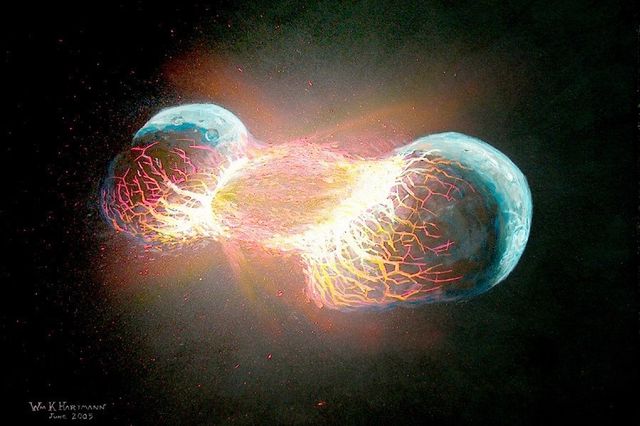 UCLA scientists Ed Young, Issaku Kohl, Paul Warren, and their collaborators are featured in Science today (January 29, 2016) with their paper “Oxygen isotopic evidence for vigorous mixing during the Moon-forming giant impact.” Using their new Panorama high-resolution mass spectrometer, which is housed at UCLA, the team has performed ultra-high precision oxygen isotope analyses of lunar samples. The compositions match those of Earth’s mantle rocks to within a few parts-
UCLA scientists Ed Young, Issaku Kohl, Paul Warren, and their collaborators are featured in Science today (January 29, 2016) with their paper “Oxygen isotopic evidence for vigorous mixing during the Moon-forming giant impact.” Using their new Panorama high-resolution mass spectrometer, which is housed at UCLA, the team has performed ultra-high precision oxygen isotope analyses of lunar samples. The compositions match those of Earth’s mantle rocks to within a few parts-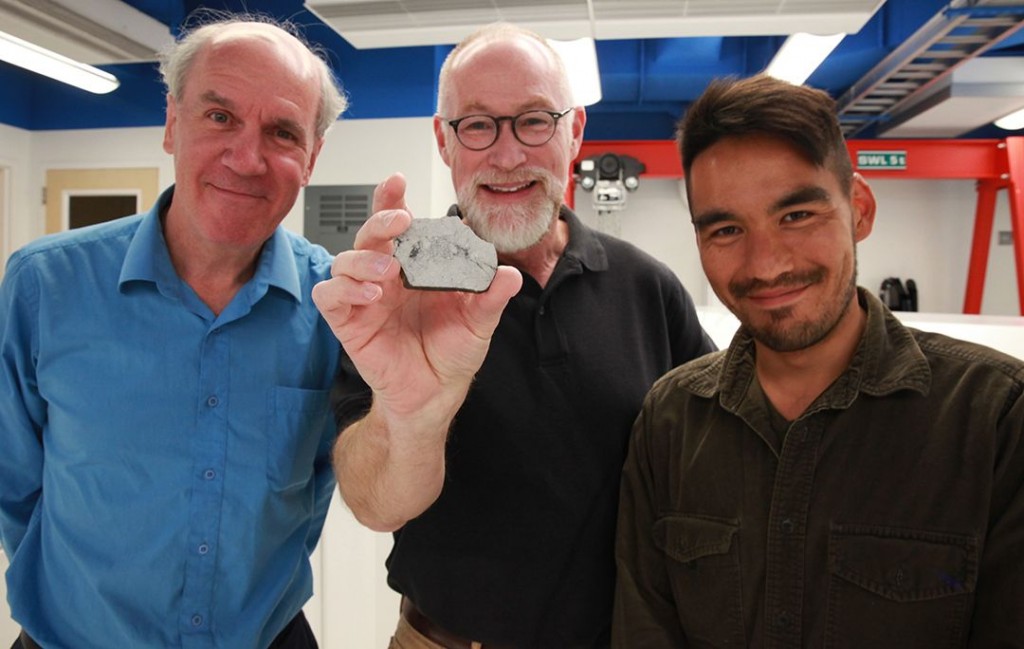 per-million (in the Δ17O parameter), demonstrating that the Earth and Moon formed from the exact same reservoir of well-mixed material. Their data also constrain the composition of the so-called “late veneer” materials added to the Earth after the Moon-forming impact.
per-million (in the Δ17O parameter), demonstrating that the Earth and Moon formed from the exact same reservoir of well-mixed material. Their data also constrain the composition of the so-called “late veneer” materials added to the Earth after the Moon-forming impact.
Read more about the science article and see the EPSS team on the UCLA Newsroom website.
Together with iPLEX, the group will be hosting a meeting on April 21-22 of this year, which will focus on the isotopic, spectrographic, and dynamic connections between asteroids, comets, and meteorites that fall to Earth. To read more about the workshop, visit the website here: The Asteroid-Meteorite Connection.
January 22nd, 2016: The Strange and Fearsome Geology of Phobos
Phobos, the inner, asteroid-like satellite of Mars, is only 20 km diameter yet exhibits a perplexing geology. Orbiting well inside the corotation radius, and also inside the Roche limit, it will spiral into Mars in a few ten million years, and experiences increasing tidal deformation. Several features stand out: the crater Stickney, almost 10 km diameter, and complex networks of striations and pitted grooves. This talk will emphasize our recent work, that shows that the patterned striations are formed by the distortion of a weak elastic shell overlying an even weaker deformable interior (Hurford et al., in review) and that the pitted grooves are sesquinary catenae formed by the eventual re-impact of ejected material (Nayak and Asphaug, in review). Long considered a possible outpost for human exploration, Phobos has a continually active geology that would be hazardous. Deimos, farther from Mars and not experiencing increasing tides, is a safer venue.
February 26th, 2016: Phobos and Deimos: What we know, what we don’t know, and why we care
The moons of Mars, Phobos and Deimos, are high priority targets for future exploration by both robotic and human missions. Despite decades of study by ground and Mars-orbiting spacecraft, key questions about the moons’ origin, geologic evolution, and potential to provide in situ resources for future manned missions remain unresolved. Phobos and Deimos either formed in situ around Mars through co-accretion or giant impact, or they are captured asteroids that originated from elsewhere in the solar system. One key to unlocking this mystery will be to determine whether the moons are composed of materials expected to be native to Martian system or if they are made of something more exotic that more likely would have been introduced from another location. Determining Phobos’ and Deimos’ surface compositions remotely has proven to be challenging in part because they lack strong diagnostic absorption features and in part because spectral observations of the moons are acquired at a variety of lighting conditions, which makes it difficult to compare them to laboratory spectra of well-characterized samples collected under controlled lighting conditions. I will present analyses of spectral data that address both of these challenges and demonstrate the moons are likely composed of volatile-rich, carbonaceous-chondrite like material, supporting the idea that they are captured asteroids from the outer solar system. I will also discuss the importance and benefits of future in situ exploration to address some of the many remaining questions about these fascinating solar system bodies.

